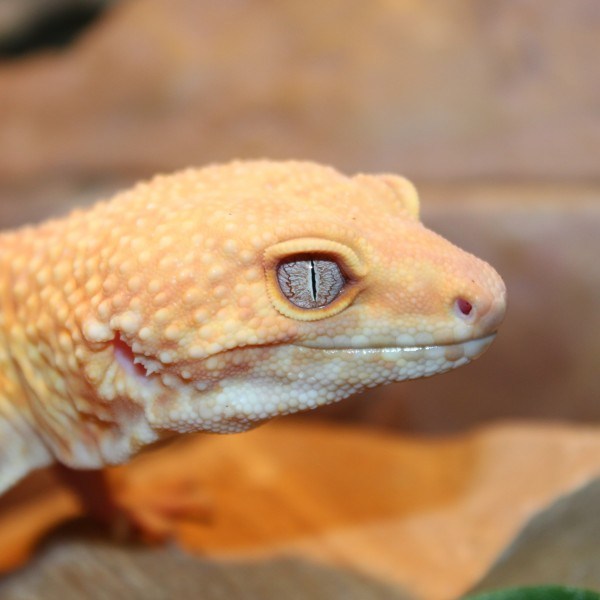Leopard Gecko Care
These are the classic beginner lizard, and were one of the first reptiles to be bred in many different colours and patterns – known as ‘morphs’.
The leopard gecko is found in south-Asian Afghanistan, Pakistan, north-west India, and some parts of Iran, in dry, arid areas. This includes rocky, dry grasslands, stony deserts, and dry scrubland. The night time temperatures in these areas can drop very low in the winter, going below 10ºc and driving them underground to wait until warmer weather returns, living on the fat stored in their broad tails. When they are above ground, their markings and skin texture camouflage them to escape predators.
They can detach their tails in order to escape predators, a process called autotomy. The detached tail continues to wriggle and jump for up to 30 minutes – a gruesome spectacle, but one which enables the gecko to make good its escape. In captivity the commonest reasons for tail loss are fighting with cage mates, breeding disagreements, and being shut in the vivarium door!
They are not strictly nocturnal (being out at night). They are something called crepuscular which means they are most active at dawn and dusk, when they will absorb a certain amount of UV through their skin, which helps them to utilise the calcium in their diet. If they need to increase their mineral intake, they will actually eat small pieces of stone or gravel – which is where the substrate eating behaviour comes from that causes so much grief to some captive geckos.
Despite it often being recommended to keep them in very sparse conditions, if they are provided with a more natural enclosure they will use all of it. They do like to climb and explore, and although we’ve never seen them trying to dig through a slate floor (as bearded dragons will tend to do), if given a substrate that holds its shape they will hollow out their own hiding spaces beneath items of decor.
Their diet is broad, although they are insectivores. Anything that moves is fair game, although in captivity they are mostly fed on mealworms, crickets and locusts. Waxworms are a particular treat, but just like us they can get fixated on food that isn’t terribly good for them long term. Always use a good quality calcium and multivitamin/multimineral supplement.
When it comes to housing, we suggest a minimal size of 86 x 49 x 56cm when using a wooden vivarium, as wood retains heat well and the extra space is needed to obtain a suitable temperature gradient. If using a glass terrarium, then 60 x 45 x 45cm (24 x 18 x 18”) is absolutely fine – both of these are for single animals.
Provide a source of UVB and a white heat lamp to replicate sunlight. It doesn’t need to be the high UV levels and heat of a day active basking lizard, but leopard geckos will use their personal sunbeam to warm up and absorb the life giving UV. We recommend the use strip bulbs; we’re aiming for dawn and dusk levels, rather than tropical mid day.
Temperature in the basking spot should be 30ºC to 32ºC, dropping to 25ºC at the cool end, and at night it should be no lower than 18ºC. A deep heat projector on a thermostat is required to prevent the night time temperature from dropping too low. Always use a good quality digital thermometer to check your temperatures, never guess!
We have a great range of set-ups in store and online.


